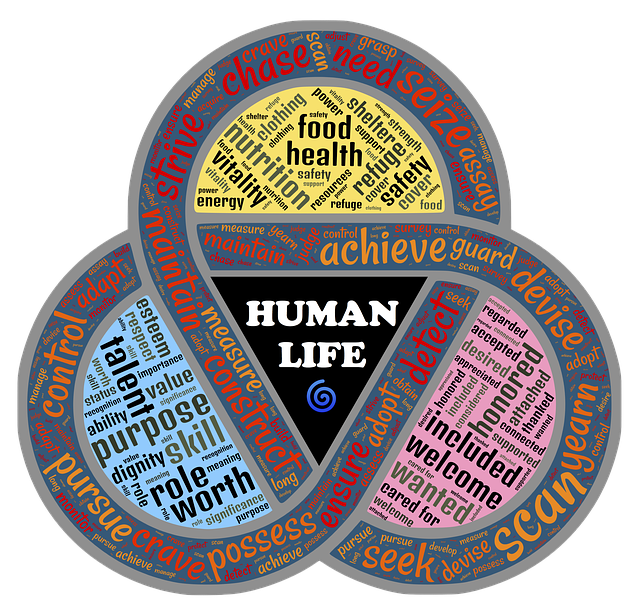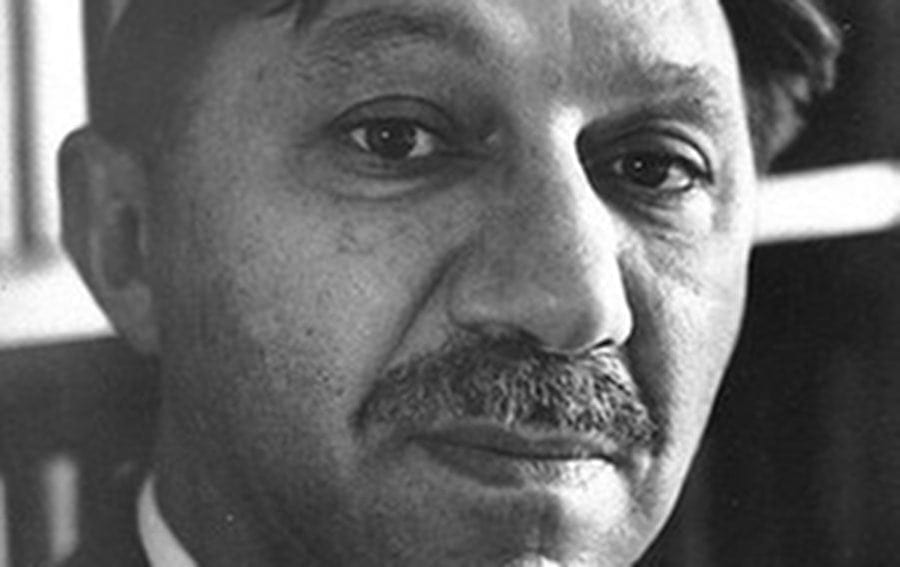Maslow’s Hierarchy of Needs is a pyramid of needs that offers unique insights into what motivates people and contributes to their well-being.
In 1943, in a paper named “A Theory of Human Motivation,” American psychologist Abraham Maslow theorized that a hierarchy of psychological needs undergirds human decision-making.
Maslow’s Popular Paper
Since then, this theory of human motivation has remained popular in sociology, management training, and psychology classes.
He broke these needs down into various levels, relative to the significance of their contribution to our well-being, commonly referred to as Maslow’s Hierarchy of needs.

What is Maslow’s Hierarchy of Needs?
At the very base of this categorization are our basic human needs for survival. These include air, food, water, and shelter. If these menial needs are not satisfied, survival becomes impossible.
Hence, it only makes sense that to satisfy successive levels of these needs, you must first have the preceding needs fulfilled. At the top of Abraham Maslow’s Hierarchy of Needs is self-actualization, or the need to become the best possible version of yourself.
This word, ‘best,’ entails many facets or meanings, which we will cover later.
Maslow’s theory is then further broken down into two different levels. The first four needs are the deficiency needs, namely physical needs, safety needs, love and belonging needs, and self-actualization needs. These are the basic physiological needs that need to be fulfilled.
The Pyramid of Hierarchy Of Needs
Maslow’s theories present his Hierarchy of needs in the form of a pyramid shape.
The basic needs are at the bottom of the pyramid and on a high level, while the intangible needs are at the top. A person can only address the higher-level needs when their basic needs are adequately fulfilled.
Firstly, we have the basic needs for bodily functioning – fulfilled by eating, drinking and going to the toilet. Maslow included sexual needs in this category as well.
Then there is the desire and wish to be safe and secure in the idea that those basic needs will also be fulfilled in the future. After that comes our need for love, friendship and company.
At this stage, Maslow writes, the individual “may even forget that once, when he was hungry, he sneered at love.” The next stage concerns social recognition, status, self-esteem and respect. And in the last is the self-actualization need.
The Growth Needs
The topmost need, self-actualization, is categorized as a personal growth need. It is imperative to distinguish between these two types of needs at this point. Deficiency needs are born out of a lack of something or a deficit. Growth needs are instead defined by a desire to grow as a human. When a deficiency need is not met, they motivate a person to strive to have them met.
Take, for example, a person who hasn’t had food for a few days. As time passes, as the person grows hungrier, so would their motivation to find food somehow.
This progression of need fulfillment should not be understood as a black-and-white situation. In Maslow’s Hierarchy of Needs, human needs do not necessarily have to be fulfilled entirely before the next need is felt.
Once a need has been fulfilled appropriately, they are no longer as actively felt. With growth needs, as their name might indicate, they are boundless.
Growth needs originate from a wish to become better and grow as a human being. As the person fulfills their growth needs, their motivation increases to become even better increases.
Once you have attempted to fulfill them, you will find yourself experiencing an expansion of these needs. It is imperative to understand that self-actualization, a growing need, is more of a journey or a continual process. It is not by any means a destination or a definite stage. The phrase’ The sky’s the limit’ perfectly represents the nature of growth needs.
Maslow believed that the motives in his Hierarchy were probably universal features of human nature. Maslow’s Hierarchy of needs is often referenced in official classes concerning organizational behavior and human resources.
Survival Needs
As already mentioned, human beings have physical needs that must be satisfied to survive. When these needs are not satisfied, the human body cannot function properly.
So until these basic needs are not fulfilled, all other needs become secondary. This is why this level is described as the most crucial level of Maslow’s Hierarchy of Needs by most, including Maslow himself.
Safety And Security Needs
When the basic physical needs, such as food, water, and shelter, are appropriately satisfied, they are pushed to the foreground. Next, security and safety needs take center stage. Security and safety needs are the second lowest level of Maslow’s Hierarchy of Needs.
As human beings, we are wired to appreciate and strive for order, predictability, and control in our lives. Family and society are both instruments and a means to reach this.
Optimal family conditions give rise to emotionally and financially secure individuals. Institutions such as the police or the judicial system are also a means to ensure physical security. Emotional security, financial security, and freedom from fear are all different facets or manifestations of this human need to experience stability and, congruently, avoid volatility.
Safety, or security needs, relate to a person’s need to feel safe and secure in their life and surroundings. Motivation comes from the need for law, order, and protection from unpredictable and dangerous conditions. Safety needs are more apparent in emergencies (e.g., war and disasters). Still, this need can also explain why we prefer the familiar or purchase insurance and contribute to a savings account.
There are many examples of safety needs in modern society.
For example, a person who does not have a satisfactory job would experience financial insecurity and, ultimately, emotional insecurity or worry.
Our safety needs are apparent even during early childhood, as children require a safe and predictable climate and usually react with fear or anxiety when such requirements are not met.
Love And Belongingness Need
After physiological and safety needs are fulfilled, Love and belongingness needs emerge. Humans are social animals, so it is only natural to receive validation from others. Having meaningful relationships with others as part of a group is necessary. This has the effect of making a person seem like a member of a group and not an outcast.
This imparts positive benefits to the person’s wellbeing. Take, for example, workplace friendships. When positive relationships are forged with coworkers, employees stay happier and resultantly more motivated at the job. Conversely, coworkers are less likely to stay happy at the job when there is hostility or coldness between coworkers.
Esteem Needs
The fourth level of Maslow’s theory is esteem needs. As the need for love and belongingness is fulfilled, esteem needs emerge. Humans are self-aware creatures, and so our perception of ourselves, as well as others’ perception of us, is crucial.
The primary elements of esteem are self-respect (the belief that you are valuable and deserving of respect) and self-esteem (confidence in your potential for personal growth and accomplishments).
Maslow classified esteem needs into two diverging categories. Esteem for oneself (self esteem) and respect from others. Most people need to be seen with respect by those around them. By accomplishing something acknowledged by others, esteem needs are satisfied.
An example to illustrate esteem needs might be how a child working hard at school may want his teachers to acknowledge his effort. If his hard work is acknowledged and appreciated, he will feel this need satisfied.
Congruently, his self esteem for himself may also arise as a consequence of this external validation. Maslow (1970) also established a link between receiving acknowledgment at school to making progress academically. He found that when a child who was otherwise not doing well in school was placed in a supportive school environment, they would have higher levels of educational attainment.
This study cements the importance of esteem needs (self esteem or otherwise), and similar patterns have been noticed in other environments, such as the workforce. When a worker’s hard work is acknowledged and appreciated, they are likely to perform even better, and this is a known motivation technique used by employers worldwide.
Self-Actualization Needs
Self-actualization needs are at the highest level in Maslow’s Hierarchy of needs. They refer to a person realizing or reaching their full potential. In general, self-actualization needs are the pursuit of personal growth.
The self-actualization needs may also be understood as self-fulfillment or growth as a person. Maslow defined this level as the desire to accomplish everything possible for a person in their situation. Since everybody’s situation or scope of possibilities in life is different, so would their self-actualization needs. An obese person, for example, might see losing weight as their ultimate goal.
Thus, self-actualization needs are particular to individuals.
For example, somebody might see being an ideal parent as their point of fulfillment.
For another, self-actualization needs may mean becoming wealthy. Similarly, this same desire could be expressed in other ways, for example, athletically or creatively. Regardless, these are all the same facets of this need for self-fulfillment.
Maslow’s Hierarchy Of Needs Is More Fluid Than Appearances Suggest
Despite the ordered nature of Maslow’s Hierarchy of Needs, it is not entirely rigid. The order of needs may be flexible and vary from person to person. For some people, the need for security may take center stage over the need for love.
Although Maslow’s Hierarchy of needs sets out a path toward self-actualization, most people do not reach this level.
Although we are all, theoretically, capable of self-actualizing, most of us will not do so, or only to a limited degree. Maslow (1970) assessed that only a minuscule 2 percent of people were able to self-actualize. Maslow was able to identify 18 such people throughout history and some contemporaries by studying their personalities.
Characteristics Of Self-Actualized Individuals
By studying these 18 people he considered to be self-actualized (including Abraham Lincoln and Albert Einstein),
Maslow (1970) successfully identified 15 common characteristics that are often found in such individuals.
15 Common Characteristics of Self-Actualized Individuals
1. A person who has achieved self-actualization perceives reality as it is. They are less susceptible to becoming deluded or seeing reality through either too negative or too positive a lens.
2. They accept the faults in themselves and those around them, not as a problem but as a symptom of being human.
3. They take action quickly without procrastinating.
4. They can successfully identify problems that they might be facing. After successfully recognizing their issues, such individuals take effective action to correct their problems.
5. People who achieve self-actualization tend to have an unusual sense of humor. Their humor may go unappreciated by those around them.
6. They can look at life through an objective lens.
7. They are highly creative individuals. This manifests in their creative pursuits, be it painting, writing, or any other activity involving a creative vision.
8. People who achieve self-actualization tend to be resistant to becoming encultured. Their identity is not derived from the culture but innately derived.
9. Such people are deeply concerned for the welfare of humanity. They are more likely to become emotionally invested in ecological issues or human rights issues and may even make an effort to aid in these efforts.
10. They have an innate appreciation of essential life experiences, such as friendship.
11. They enjoy developing deep interpersonal relations with a handful of people.
12. They strive for unique experiences.
13. They have a strong need for privacy and will not appreciate an invasion of their boundaries.
14. They tend to have an egalitarian attitude. They generally will not treat any person worse because of their station in life
15. They have strong moral and ethical standards
Behaviors Of Self Actualizing Individuals
In addition to these characteristics of self-actualizing individuals, here are some of the behaviors they follow.
(a) Individuals that achieve self-actualization tend to adopt a child-like approach to life. They notice and savor the more trivial things in life.
(b) They try to move out of their comfort zone and try new things in life.
(c) They form an opinion independently. Instead of choosing to be a sheep in the crowd, they use their feelings to evaluate experiences. The voice of their contemporaries or the culture at large does not have much of a bearing on their thought process.
(d) People who achieve self-actualization are more likely, to be honest toward others. They do not have the habit of putting up a pretense.
(e) They understand that their opinions may contradict or even offend those around them. Despite this, they hold to their convictions even if they make them unpopular.
(f) Self-actualizing individuals accept responsibility for their wrongdoings or shortcomings. They do not attempt to cover up their faults with lackluster excuses.
(g) Humans tend to put up defenses around us to avoid situations that irk us or take us out of our comfort zones. Those who have achieved self-actualization recognize and acknowledge these defenses. Then they attempt to break these defenses down when they feel necessary. This allows them to have experiences that further grow as individuals.
The above list sets out the characteristics of self-actualizing people.
Self-Actualization is Not an Absolute State
That said, every person that achieves self-actualization does so in a unique way. Self-actualization is not an absolute state by any means and is a matter of degree. Maslow cemented this in his revised Maslow’s Hierarchy of Needs in 1970.
It is unnecessary to display all 15 characteristics included in this list to become self-actualized. Just because people display these characteristics does not mean they would be self-actualized.
At the core of Maslow’s Hierarchy of Needs is that as human beings, our needs, or the deprivation of them, motivate us. If our very base or essential needs are not met, we feel as being in a position of being stuck or unmotivated.
Criticisms of Maslow’s Hierarchy of Needs
While Maslow’s Hierarchy of needs is an excellent way to break down and visualize human needs, it also has some noticeable flaws.
First and foremost, the pyramid created by Abraham Maslow is contingent on the assumption that a human being needs to be satisfied before the next one can be satisfied. Certain cultures have individuals in which a large number of people live together.
By examining cultures in which many live together in poverty, it becomes apparent that people who struggle with providing even basic needs such as bread and butter and a roof over their heads still have their need for love and belongingness fulfilled.
If we were to strictly look at these impoverished communities’ situation through the lens of Maslow’s Hierarchy of Needs, we would say this is not possible. Yet, it happens.
Throughout history, we see people who have arguably attained self-actualization, despite their impoverished circumstances. This once again contradicts Maslow’s findings.
Is the Hierarchy of Needs Individualistic?
Maslow’s Hierarchy of needs is also criticized for being too individualistic or focused on themselves only. By hyper-focusing on the individual and their needs, the needs of society as a whole are pushed to the background. This has the apparent effect of detracting from issues that plague society, such as wealth inequality or discrimination based on sex or race.
Another criticism of Maslow’s theory along the same lines is that most research into this area of study by psychologists and sociologists does not uphold the idea of a hierarchy of needs.
Research contradicts the idea of a ‘pyramid of needs; instead, it may be understood as a straight line on which these needs stand shoulder to shoulder, more or less equally in human behavior. This is cemented by researchers from Baruch College (Wahba and Bridwell), who found that the ordered ranking in Maslow’s Hierarchy of Needs had little evidential basis.
Lastly, Maslow’s theory has been criticized as being too difficult to test. Maslow’s definition of being self-actualized is somewhat subjective and not easy to test scientifically. The people he considers to be self-actualized are a minimal sample of individuals. Thus this brings into question whether the parameters of self-actualization that Maslow has set are valid or just a reflection of the small pool of people he selected.
Conclusion
In conclusion, it would not be a stretch to say that Maslow’s Hierarchy of Needs offers unique insights into what motivates people. This has implications in other fields besides psychology, such as law-making and business practices. That said, it is not without its faults which should be acknowledged.

